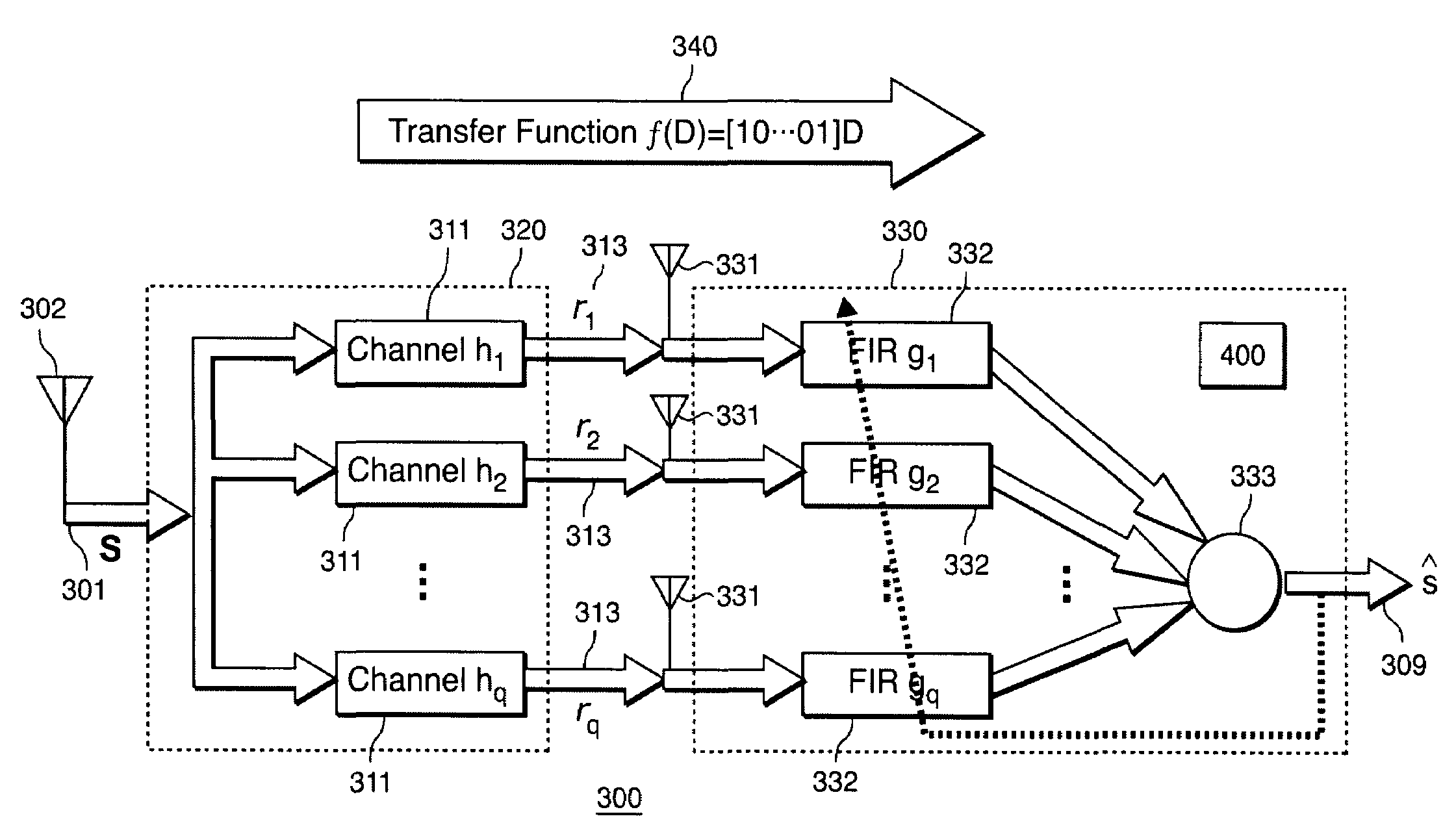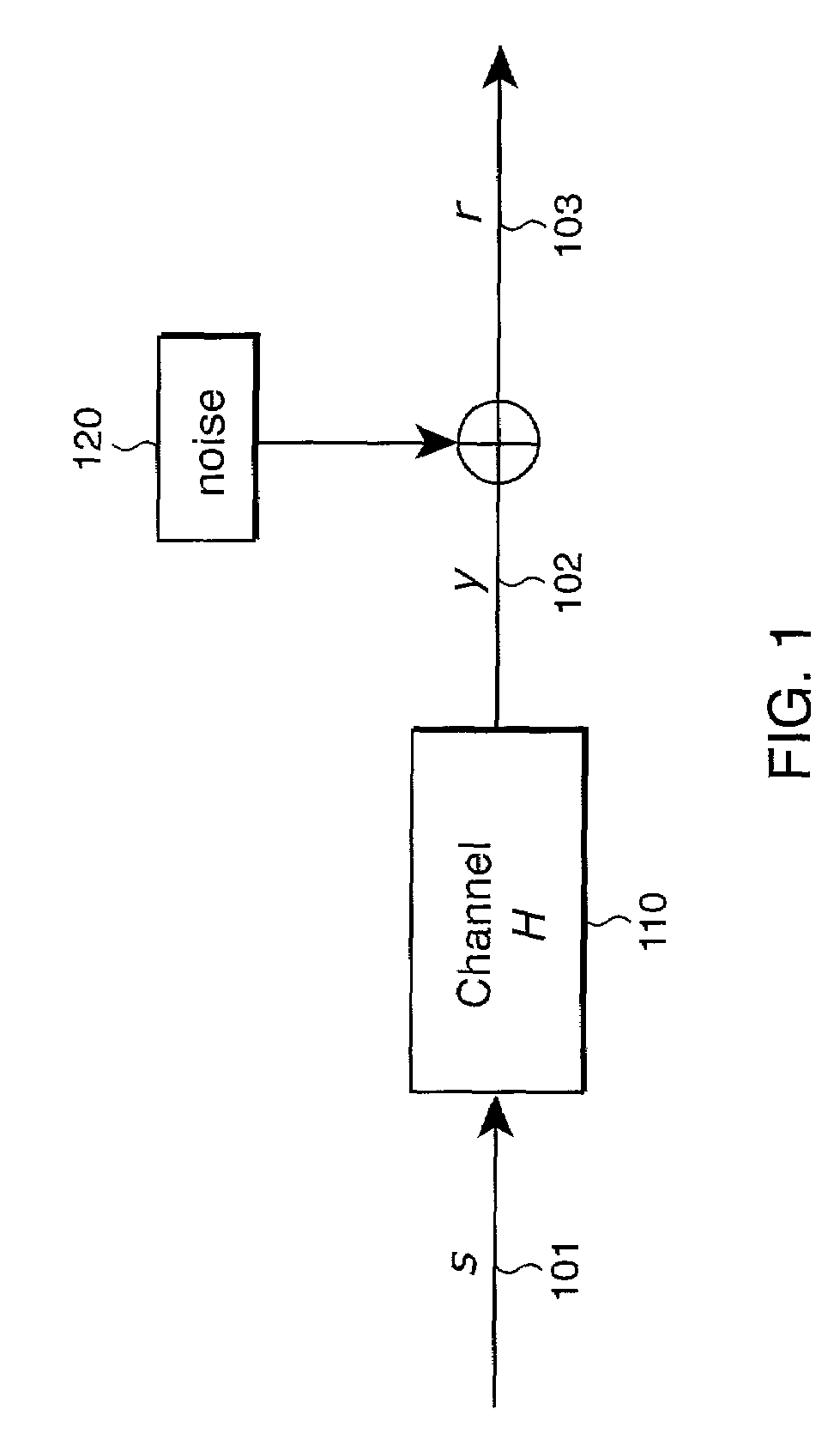Dynamic diversity combiner with associative memory model for recovering signals in communication systems
a technology of associative memory and combiner, applied in diversity/multi-antenna system, polarisation/directional diversity, amplitude demodulation, etc., can solve the problems of displaced received signals with respect to time and space, multiple copies of delayed signals can interfere with the main signal, and multiple copies of delayed signals can achieve significant computation savings, and eliminate the burden. , the effect of reducing the burden
- Summary
- Abstract
- Description
- Claims
- Application Information
AI Technical Summary
Benefits of technology
Problems solved by technology
Method used
Image
Examples
Embodiment Construction
System Overview
[0036]FIG. 3 shows a dynamic diversity combiner according to the invention. The combiner can be used with either a single-input-multiple-output (SIMO) system 300 having a “vector” channel, or a multiple-input-multiple-output (MIMO) system having a “matrix” channel. A source signal s 301 is radiated by a transmitter antenna 302. The source signal passes through multiple (q) channels hl, . . . , hq 311 in a “h-domain”320, for example, the multi-path channels of a cellular telephone system. The channels are subject to multi-access interference, multi-path fading, varying power levels of transmitters, and noise, as described above. We use the term “channel” to generally refer to the total relationship between input symbols and output symbols in a communication system.
[0037]At a receiver, multiple receiver antennas 331 capture multiple received signals r1, . . . , rq 313. A corresponding number of FIRs 332 and diversity combiners 333 recover an estimate ŝ309 of the source ...
PUM
 Login to View More
Login to View More Abstract
Description
Claims
Application Information
 Login to View More
Login to View More - R&D
- Intellectual Property
- Life Sciences
- Materials
- Tech Scout
- Unparalleled Data Quality
- Higher Quality Content
- 60% Fewer Hallucinations
Browse by: Latest US Patents, China's latest patents, Technical Efficacy Thesaurus, Application Domain, Technology Topic, Popular Technical Reports.
© 2025 PatSnap. All rights reserved.Legal|Privacy policy|Modern Slavery Act Transparency Statement|Sitemap|About US| Contact US: help@patsnap.com



